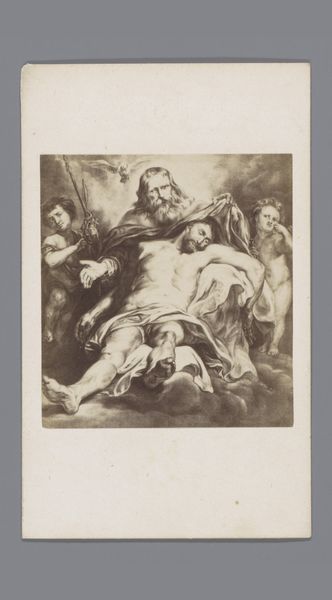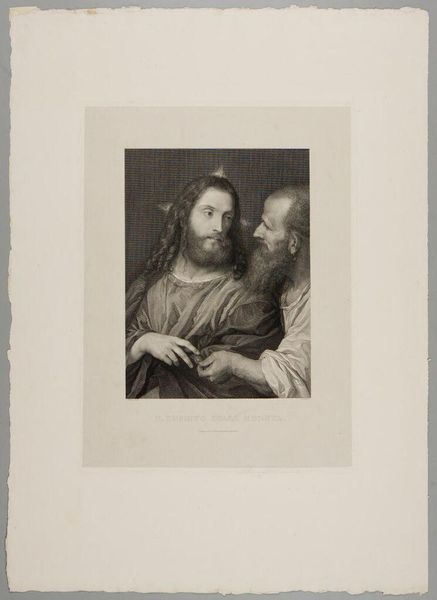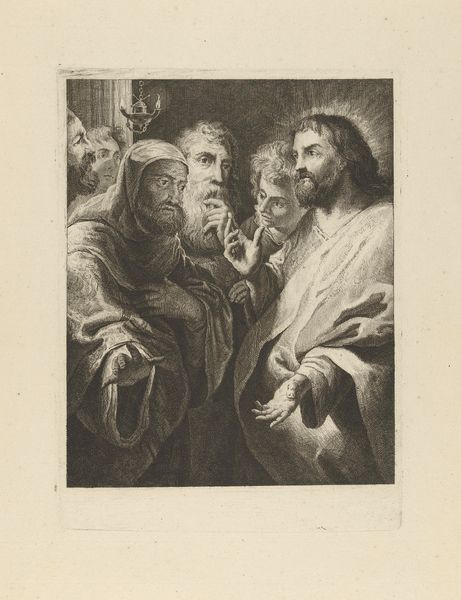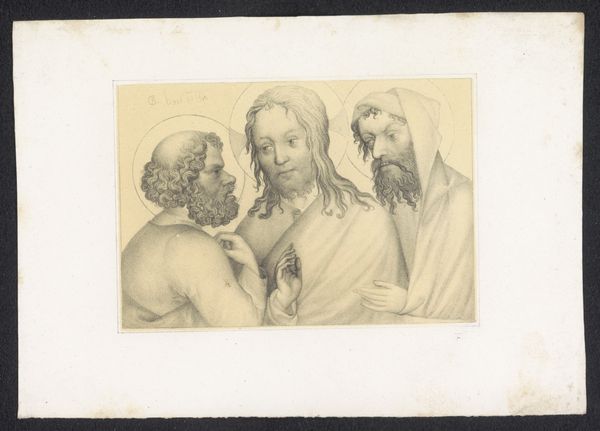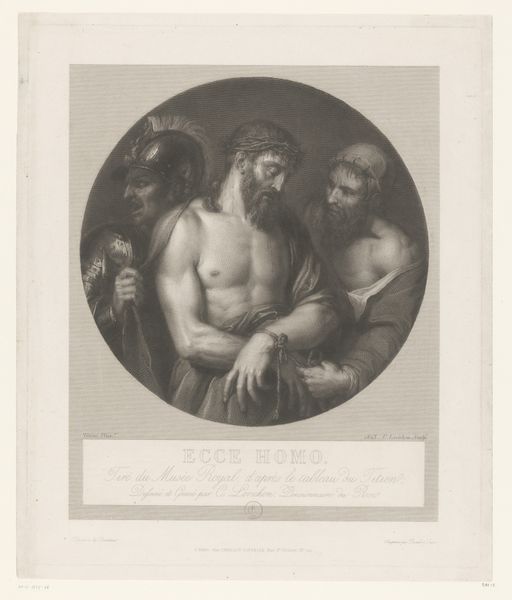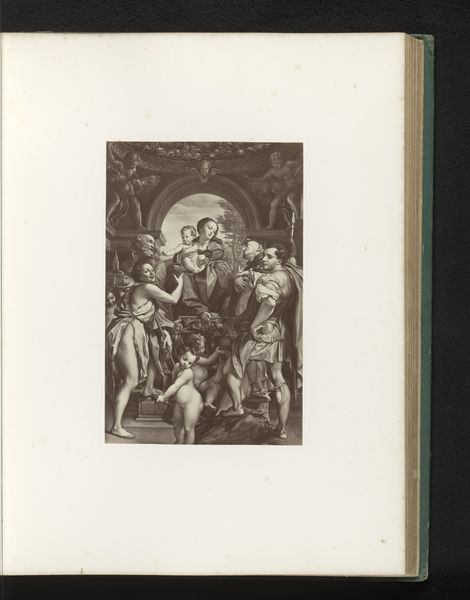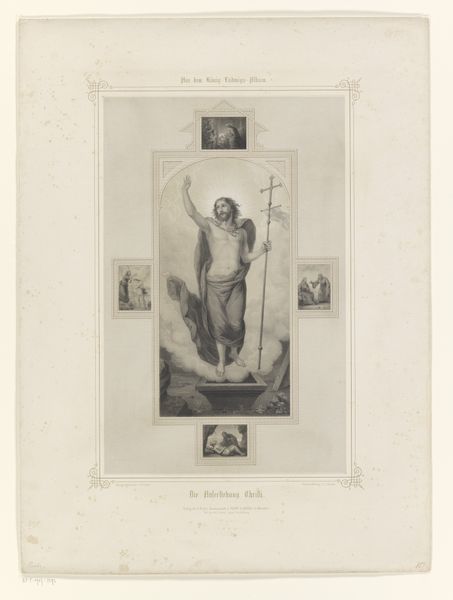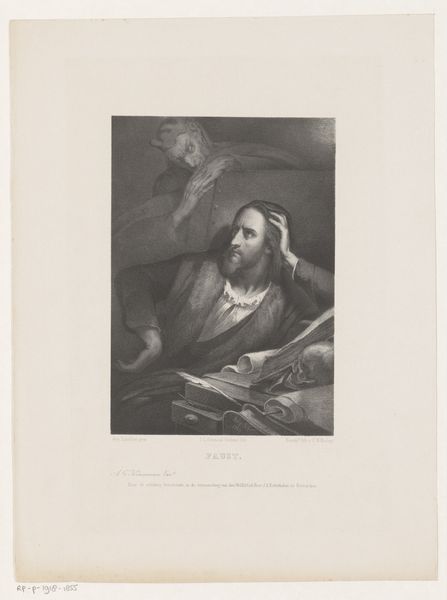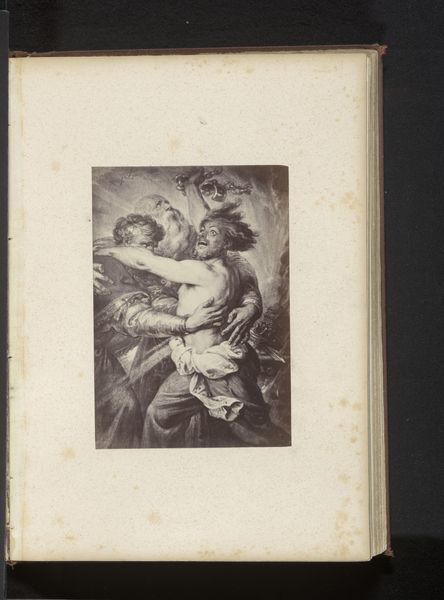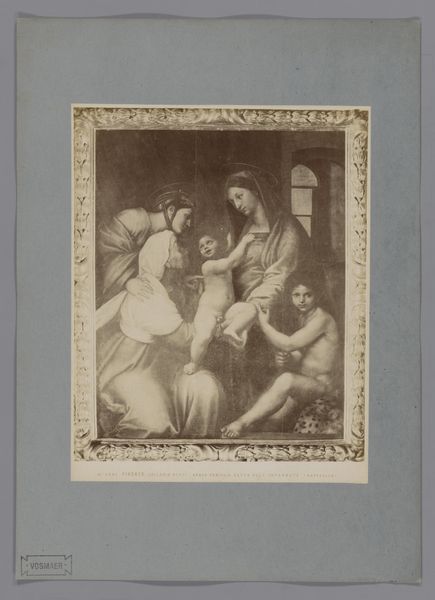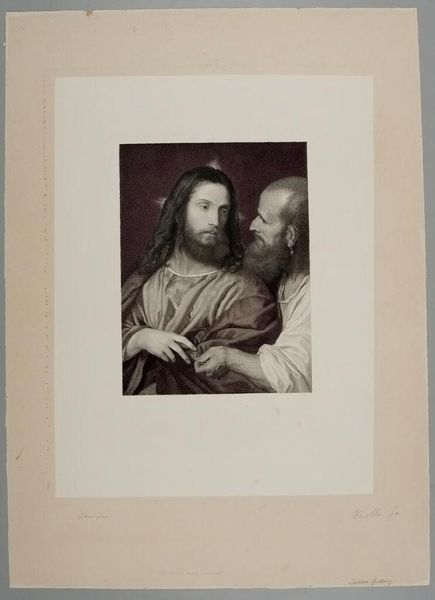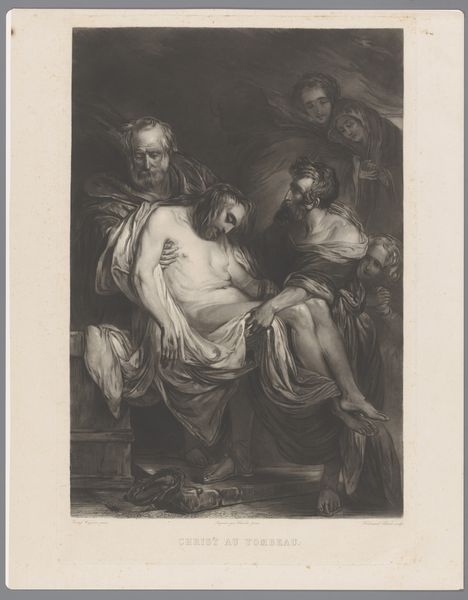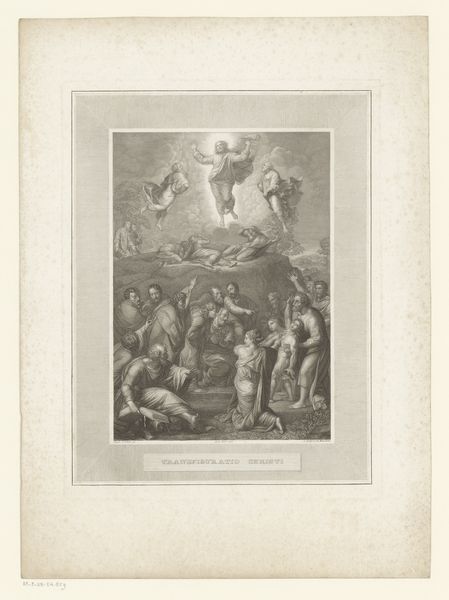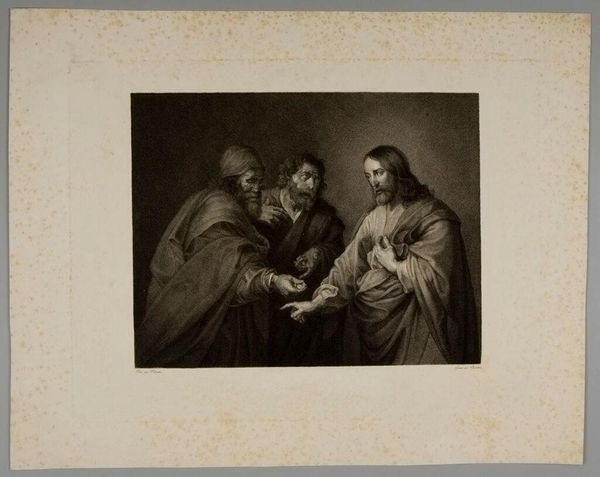
Fotoreproductie van een schilderij door Anthony van Dyck, voorstellend Christus en de cijnspenning c. 1870 - 1900
0:00
0:00
Dimensions: height 274 mm, width 213 mm
Copyright: Rijks Museum: Open Domain
Alfredo Noack made this photograph of a painting by Anthony van Dyck, sometime in the late 19th century. The image depicts Christ and the Tribute Money. Now, photography, unlike painting, is always indexical. It bears a direct, physical relationship to its subject. In other words, light bounced off Van Dyck’s painting to expose the photographic plate. But the image itself – made through chemical processes – it's also deeply embedded in social and economic life. The amount of labor needed to produce photographs decreased greatly during Noack's time. The question is, why was this picture made? Was it to provide access to Van Dyck’s painting for those who couldn’t see the original? Was it to document the painting for scholarly purposes? Or was it simply to sell as a commodity, capitalizing on Van Dyck’s fame? Photography democratized image-making, of course, but it also deepened the entanglements of art and commerce.
Comments
No comments
Be the first to comment and join the conversation on the ultimate creative platform.
